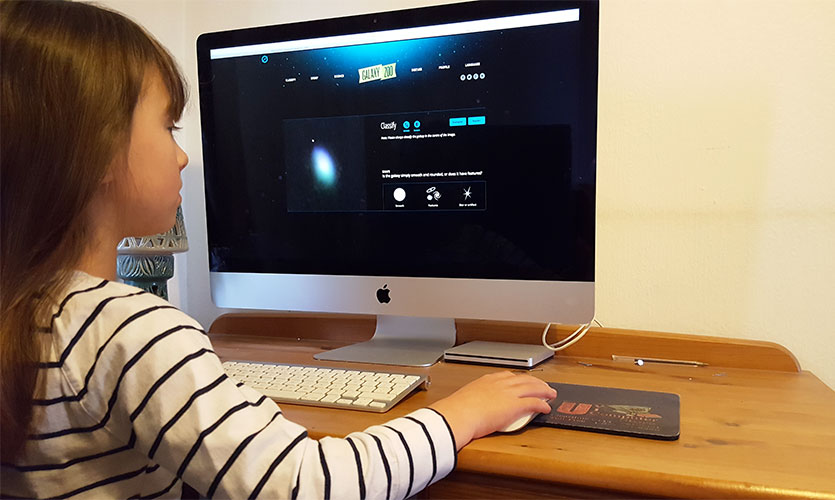Galaxy Zoo allows public to zoom in on Universe discoveries

While measuring galaxy structure is not a simple task for a computer, the human eye has evolved to be the perfect pattern recognition tool. This is why astrophysicists at Liverpool John Moores University have been working with members of the public to understand how galaxies are formed.
Researchers at the LJMU Astrophysics Research Institute have recently joined Galaxy Zoo, a 'citizen science' driven astronomy project connecting academics and members of the public from all over the UK and around the world. Through the interactive Galaxy Zoo website, ARI scientists are inviting volunteers to help analyse advanced telescope imaging of galaxies in our Universe from the Galaxy And Mass Assembly (GAMA) survey and the Kilo-Degree Survey (KiDS).
A new view of space is now possible thanks to this exciting collaboration, offering an unrivalled opportunity for the study of galaxies in the nearby Universe. A total of 50,000 galaxies from the GAMA and KiDS surveys are now available for classification by the public through the Galaxy Zoo website.
The results of this study will assist astronomers in answering some of the fundamental questions about where galaxies come from, and the processes that took place to get them there. Open to anyone of any age, the project also links into LJMU's National Schools' Observatory, which works with thousands of children and teachers all over the country to bring cutting-edge astronomical research into the classroom and pupils' homes.
Elisabeth Baeten, one of the ‘citizen scientists’ who has been involved in the project since the start, commented: “I classify galaxies on a daily basis, helping out people from all over the world with their questions on galaxies and I know that what I'm doing is helping out scientific research. I've looked at hundreds of thousands of images and every now and then it just hits me, I am so fortunate to literally have the Universe at my fingertips. The new GAMA-KiDS images are brilliant and add even more detail.”
Alexander Jonkeren, another participant in the project, lives in the Netherlands. He explained: “Participating in Galaxy Zoo means you are working with the best science teams and telescopes in the world, and the collaboration with GAMA-KiDS confirms this. This means as a Galaxy Zoo volunteer you are really contributing at the forefront of astronomy.”
Professor Chris Collins, Head of the Astrophysics Research Institute, said: “The new GAMA data uploaded to Galaxy Zoo has resulted in a surge from the public in galaxy classifications. Projects like this demonstrate that the public can make a real contribution to answering fundamental questions about the Universe which professional astronomers are trying to unravel, such as how did galaxies form?”
Since introducing GAMA-KiDS images, Galaxy Zoo has seen four times the amount of galaxy classifications, that’s 26,000 galaxies explored daily. In the future it is expected that 6,000 participating volunteers will be classifying 250,000 galaxies each month. The project uses the 2.6m VLT Survey Telescope located at the ESO Paranal Observatory in Chile.
To help with this research and even be the first person to see a galaxy you have been asked to classify, visit Galaxy Zoo or contact GAMA-KiDS team at LJMU by emailing Dr Lee Kelvin or Professor Ivan Baldry
Galaxy data is from the Galaxy And Mass Assembly (GAMA) survey
Imaging is from the VST Kilo-Degree Survey (KiDS)
Citizen science galaxy classifications are performed as part of the Zooniverse Galaxy Zoo project.
Images credits: 2.6m VLT Survey Telescope located at the ESO Paranal Observatory in Chile.


